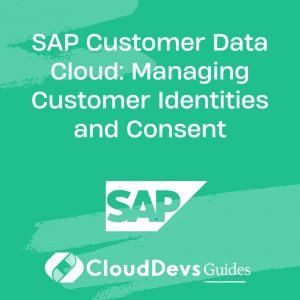SAP Customer Data Cloud: Managing Customer Identities and Consent
Customer identity management and consent are crucial for building trust and ensuring compliance with privacy regulations. SAP Customer Data Cloud (CDC) provides the tools needed to manage these aspects efficiently. This article explores how SAP CDC facilitates the management of customer identities and consent, along with practical examples.
Understanding SAP Customer Data Cloud
SAP Customer Data Cloud, part of the SAP Customer Experience suite, focuses on managing customer identities, preferences, and consent across multiple channels. It enables organizations to comply with global privacy regulations like GDPR and CCPA while delivering personalized experiences.
Key Features of SAP Customer Data Cloud
SAP Customer Data Cloud offers a comprehensive solution for managing customer data:
– Customer Identity Management: Capture and manage customer identities securely.
– Consent Management: Ensure compliance by managing customer consent for data processing.
– Preference Management: Store and manage customer preferences across various touchpoints.
– Privacy Compliance: Helps organizations comply with global data privacy laws.
Using SAP Customer Data Cloud for Identity Management
Managing customer identities involves capturing and securely storing personal data. SAP CDC provides features that allow organizations to centralize identity data and provide a seamless experience for users.
Example: Capturing Customer Identity Data
Here’s how you might use SAP CDC to capture customer identity data during registration.
```csharp
using SAP.SDK.Identity;
using SAP.SDK.Identity.Models;
class Program
{
static void Main()
{
var identityService = new IdentityService();
var customer = new Customer
{
FirstName = "John",
LastName = "Doe",
Email = "john.doe@example.com",
Password = "SecurePassword123"
};
identityService.RegisterCustomer(customer);
Console.WriteLine("Customer registered successfully.");
}
}
```
Managing Customer Consent
Consent management is critical for ensuring that customer data is processed legally. SAP CDC enables organizations to obtain, store, and manage customer consent efficiently.
Example: Obtaining Customer Consent
Here’s an example of how to request and record customer consent using SAP CDC.
```csharp
using SAP.SDK.Consent;
using SAP.SDK.Consent.Models;
class Program
{
static void Main()
{
var consentService = new ConsentService();
var consent = new Consent
{
CustomerId = "12345",
ConsentType = "Marketing Emails",
Granted = true,
DateGranted = DateTime.Now
};
consentService.RecordConsent(consent);
Console.WriteLine("Customer consent recorded successfully.");
}
}
```
Managing Customer Preferences
Customer preferences, such as communication channels and frequency, can be managed centrally using SAP CDC. This ensures that customers receive personalized experiences aligned with their preferences.
Example: Updating Customer Preferences
Here’s how you might update a customer’s communication preferences.
```csharp
using SAP.SDK.Preference;
using SAP.SDK.Preference.Models;
class Program
{
static void Main()
{
var preferenceService = new PreferenceService();
var preferences = new Preferences
{
CustomerId = "12345",
PreferredChannel = "Email",
Frequency = "Weekly"
};
preferenceService.UpdatePreferences(preferences);
Console.WriteLine("Customer preferences updated successfully.");
}
}
```
Ensuring Privacy Compliance
Privacy compliance is a fundamental aspect of data management. SAP CDC provides the tools to ensure that your organization complies with regulations like GDPR by managing customer consent and preferences transparently.
Example: Generating Compliance Reports
SAP CDC can generate reports that show customer consent and data usage, helping organizations demonstrate compliance.
```csharp
using SAP.SDK.Compliance;
class Program
{
static void Main()
{
var complianceService = new ComplianceService();
var report = complianceService.GenerateComplianceReport("12345");
Console.WriteLine(report);
}
}
```
Conclusion
SAP Customer Data Cloud offers a robust solution for managing customer identities, consent, and preferences, helping organizations build trust with their customers and comply with privacy regulations. By leveraging these capabilities, businesses can deliver personalized experiences while maintaining high standards of data protection and privacy.
Further Reading:
Table of Contents









